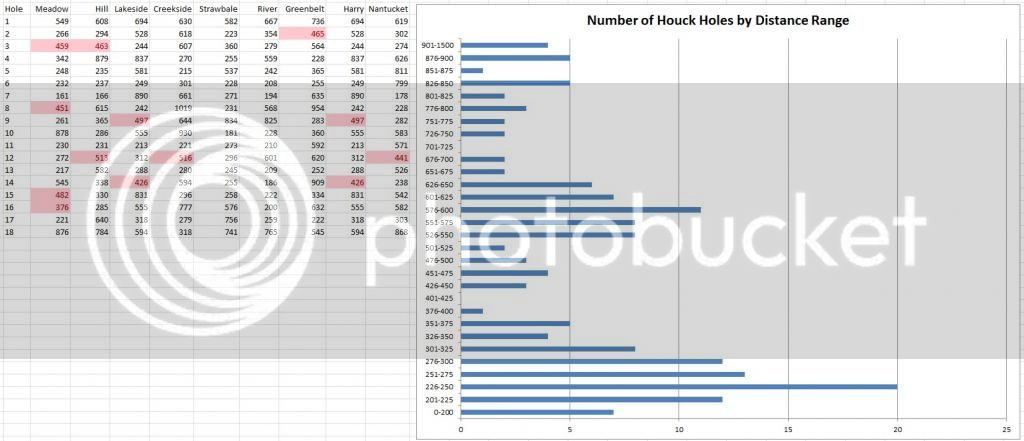Hi John,
As an avid course designer I have found your articles to be very informative. I tend to go back and reread them as a refresher as well. I appreciate you taking the time to write them as there doesn't seem to be much literature out on disc golf course design at the moment (or atleast that I can find).
My question to you is: unlike ball golf, course designers don't have the luxury to design a course just as they'd like. Adding trees, sand, brush, etc. where they like. We tend to have to make the best out of the land provided. Sometimes this means having very open holes where the park is mostly open with just tall brush and a few trees here and there. Do you have any tips on how to make an open hole still be challenging? Possibly by shaping the fairway a certain way or maybe keeping brush patches on the fairways in key areas?
Thank you.
I'm so glad that you find those articles helpful -- that's why we do them. I appreciate Randy Signor and Brian Graham and the rest of the PDGA for wanting to make that kind of information available to their readers. And I appreciate Rick Rothstein for that same thing going back into the '90's.
It can be tricky to make holes in the open that are fun and challenging. Two things I've noticed that stick out to me:
1. Some courses have a wide open Hole #1 and then a bunch of holes in the woods. I would think very hard about walking an extra 100 yards and starting the course closer to the trees.
2. When you have a few scattered trees, you get more mileage out of them when you use them by tee than if you use them by the basket. If you use them on the tee, you can actually shape the shot. When you use them by the basket, unless they're good and wide, you just create a flukey situation where one good shot hits the tree and an almost identical good shot misses the tree.
The good news, as I mentioned in my last article, is that I'm finding property owners much more willing to plant trees than they've been in the past. Just in the last year, Little Elm planted over 40, I think; Trey Texas did more than 50 over two courses; and Tall Firs (which opens in a week from today) did about 130.
Of course, the trees need to be big enough to make a difference, so I insist on at least 2 1/2" caliper and 8' of height. Bigger is better, but those can make a difference off the tee, as long as a player is throwing backhand or sidearm and not something upside down. By the basket, I'll want to use them in groups to get good width, and focus in areas where the shot will already be low. Don't forget to plan for future growth of those trees.
I've also found property owners more willing to move dirt, and that can help in open areas. Simple mounds can create places being on or behind the mound could result tricky footing and/or a tricky shot and/or a blind shot. I haven't used that technique yet -- fortunately, I haven't needed to.
It's actually coincidental that you ask about this topic, as my NEXT article is going to be solutions for open areas. Tall Firs used to be a golf course, and a lot of it is wide open. It's also only about 23 acres, including the pond (and it's surrounded by homes, which makes it much smaller), so putting in a championship-style course was a challenge.
The classic answer for creating fun and challenging holes in a wide open area is artificial OB, and the classic example is the USDGC. I've been watching some of the Smashboxx.tv and DGPTV coverage from Blue Lake, and obviously there's a ton of it there, too. But that's not something you'd want for casual play. I try to reserve artificial OB as a last resort. I did use it at Tall Firs, but we made the in-bounds areas as wide as we possibly could, and you'll only be OB if you made a really bad shot and are in someone else's fairway.
The big thing at Tall Firs was finding a way to give players an incentive to stay in their own fairway while not giving them a penalty stroke for a small mistake. So what we did on several holes was to create a zone in between fairways that would be undesirable but not too penal. I'll explain it in the next article, and once I've written it, I'll explain it here, too. For now, I hope that helps a little.


